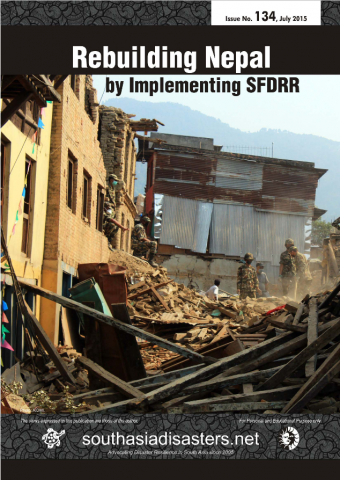Rebuilding Nepal by implementing SFDRR


Disaster recovery in Nepal presents a wide range of challenges. Donor assistance in Nepal can be more effective if made in accordance with the new international framework for Disaster Risk Reduction, the Sendai Framework for Disaster Risk Reduction 2015-2030 (SFDRR). This short note draws on the experience from the disaster responses to various natural disasters by the All India Disaster Mitigation Institute (AIDMI) in a variety of forms such as direct implementation, monitoring and learning and evaluations, including capacity building and policy advocacy with national governments and humanitarian donors. The note highlights key lessons to guide donor community to support and promote SFDRR priorities in the context of long-term recovery in Nepal.
The overall purpose of this note is to provide advice on useful strategies to donor community for implementing the SFDRR through distillation of South-Asia experience on disaster risk management.
southasiadisasters.net, July, 2015.
Rebuilding Nepal by implementing SFDRR
http://www.preventionweb.net/english/professional/publications/v.php?id=45608
